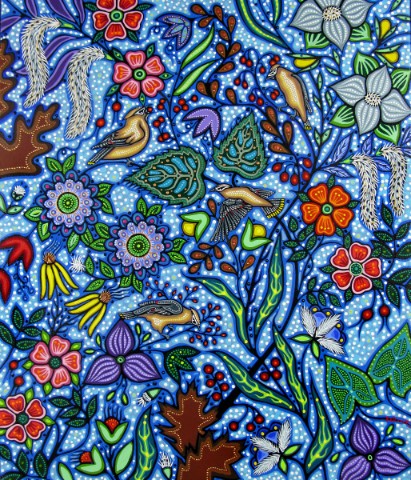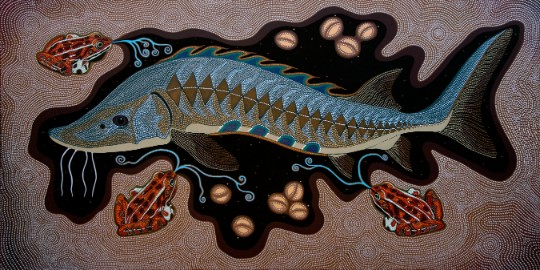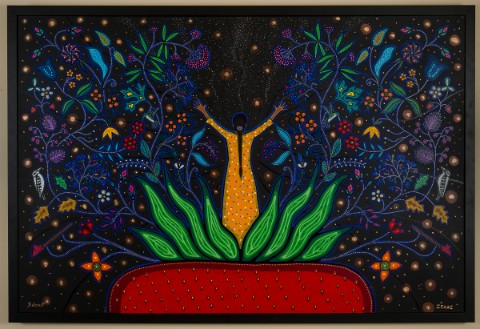By Leah Ching
Christi Belcourt is an artist who needs no introduction. A Michif visual artist whose ancestry traces back to Manitou Sakhigan, Alberta, Belcourt has received national and international acclaim for her work, which explores the beauty of the natural world, traditional Indigenous worldviews on spirituality and natural medicines, and nature’s symbolic properties.
In a tradition of Métis floral beadwork, Belcourt uses her subject matter to convey a metaphor for human existence, relaying meanings that draw attention to the environment, biodiversity, spirituality, and Indigenous rights. Primarily a painter, Belcourt is also versed in traditional arts, working with beads, hides, copper, wool trade cloth, and most recently birch bark, plant fibres, and ochre.
This June, the Thunder Bay Art Gallery will feature a major retrospective exhibit by Belcourt, including works by, and in collaboration with, Indigenous artist and environmentalist Isaac Murdoch. Part of a national touring exhibition, Uprising: The Power of Mother Earth will be on display in Thunder Bay from June 22 to November 25, co-produced by both the Thunder Bay Art Gallery and Carleton University Art Gallery.

Four Cedar Waxwings, acrylic on canvas, 76 x 64 cm
The upcoming exhibit invites viewers to reckon with the power and agency of the land, as well as with humanity’s dependence on earth for survival. “There is a power within Mother Earth that we are not respecting. We often forget that the earth doesn’t need human beings, but we need everything that is on this earth to survive,” says Belcourt. “The sad part is that the earth will go on without us, but it’s through our own actions that we have become a threat to our own species and others around us.”
Merging art and activism towards goals of social justice, Belcourt lets her work speak for itself—and indeed, it speaks volumes. Revealing a deep connection with and respect for Mother Earth and the traditions and knowledge of her people, Belcourt’s art is underpinned by, and brings forth critical interventions about, issues of environmental justice and justice for Indigenous peoples on this land.

What the Sturgeon Told Me, acrylic on canvas, 61 x 122 cm
“There are long-standing issues around land-theft in our country, where our land has been stolen from us. And people are now beginning to realize that where Indigenous peoples have been able to take care of the traditional territory, there is more biodiversity to be found in those areas, and the land is more self-sustaining,” says Belcourt. “Indigenous people have always known that you only take what you need, and you leave the rest alone to do what it needs to, so that there will be enough for future generations.”
Highlighting the potential located within art for resistance, community building, and social justice, Belcourt’s work brings to fore the need for an “uprising” for future generations, one that works towards goals of justice for Indigenous peoples, and for the land. An innovative and dynamic artist driven by a deep love for the earth, Belcourt’s latest exhibition reveals the political and environmentalist foundations behind all of her art. “Every good revolution has revolutionary art. It’s no question that that’s what we want: a non-violent revolution for the earth,” she says.
Featured image: Christi Belcourt and Isaac Murdoch, New Beginnings, acrylic on canvas, 122 x 183 cm














